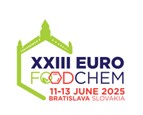Scientific journal
Journal of Food and Nutrition Research
Summary No. 1 / 2009
ŠIMKO, P. – KOLEK, E. – ŠIMON, P. – ŠIMÚTH, T. – MARKOVÁ, L.
Elimination of acrylamide by polymerization catalysed by inorganic food components
Journal of Food and Nutrition Research, 48, 2009, No. 1, s. 8-13
Peter Šimko, VÚP Food Research Institute, Priemyselná 4, P. O. Box 25, SK – 824 75 Bratislava, Slovakia. Tel.: 00 421 2 5557 4622, Fax: 00 421 2 5557 1417, e-mail: peter.simko@vup.sk
Summary: This paper summarizes results of the experiments aimed at the behaviour of acrylamide (AA) in contact with NaCl and additives of table salt at elevated temperatures. In the first experiment, samples were heat-treated at 171.1 °C for 10 min. Presence of NaCl in the matrix brougth about a decrease in AA content of up to 40%, when the highest decrement in the AA content was observed in the range of 0–1 % (w/w) of NaCl added. Than, differential scanning calorimetry measurements indicated that the elimination of AA was caused by its polymerization at elevated temperatures and stimulated by NaCl. Far more intensive support of polymerization showed potassium ferrocyanide and potassium iodate (as table salt additives), which decreased AA content by 61 % and 88 %, respectively, in comparison to pure NaCl. Comparing infrared spectra of AA and the product formed during the experiments, it was found that all inorganic compounds brought about polymerization of AA molecules through new C-C linkages among vinyl groups, while carbonyl as well as amino groups of AA molecules remained in the original state. Based on the treatment of experimental results, parameters characterizing the kinetics of AA polymerization at non-isothermal conditions were established.
Keywords: acrylamide; polyacrylamide; sodium chloride; potassium ferrocyanide; potassium iodate; infrared spectroscopy; gas chromatography – mass spectrometry; differential scanning calorimetry
Download:
(pdf, 159.24 Kb, 1993x)










